Why is Regular Dog Grooming So Important?
- 21 Jun 2025 10:00
Why is Regular Dog Grooming So Important?
Regular dog grooming extends far beyond merely making your pet look presentable. It plays a critical role in their health, hygiene, and even their behavior. Neglecting a dog's coat can lead to painful mats, skin infections, and discomfort. Furthermore, grooming sessions offer a unique opportunity to bond with your dog and conduct a thorough physical check-up.
Preventing Matting and Skin Issues
Mats are dense tangles of fur that can pull on a dog's skin, causing pain and irritation. In severe cases, mats can restrict blood flow and lead to skin infections. Regular brushing helps to remove loose hair, dirt, and debris, preventing these painful tangles from forming. It also stimulates the skin, promoting healthy oil distribution which contributes to a shiny, resilient coat. A well-maintained coat acts as a protective barrier against external elements, reducing the likelihood of skin dryness, flakiness, and the proliferation of harmful bacteria. This proactive approach to coat care significantly reduces the risk of expensive veterinary visits down the line.
Early Detection of Health Concerns
During grooming, you have a prime opportunity to inspect your dog's skin, ears, eyes, and paws. This close examination can help you identify lumps, bumps, parasites, rashes, or any unusual changes that might indicate a health issue. Early detection often leads to more effective treatment and better outcomes for your pet. You might notice subtle changes in skin texture, discoloration, or an unusual odor that could signify an underlying health problem. Catching these signs early can make a significant difference in your dog's prognosis and recovery, emphasizing the importance of consistent physical checks during grooming sessions.
Promoting Overall Hygiene and Comfort
A clean dog is a comfortable dog. Regular bathing removes dirt, allergens, and odors, contributing to a more pleasant living environment for both you and your pet. Trimming nails prevents overgrowth, which can lead to pain, difficulty walking, and even joint problems. Cleaning ears helps prevent infections, and dental care is crucial for preventing plaque buildup and gum disease. Beyond the physical benefits, a well-groomed dog is generally happier and more comfortable in their own skin, leading to better behavior and a more harmonious relationship with their owners. It's about providing holistic care that addresses both internal and external aspects of their well-being.
Essential Dog Grooming Tools You'll Need
Having the right tools is paramount for effective and stress-free dog grooming. Investing in quality equipment will make the process easier for both you and your dog, ensuring a more positive experience. The quality of your grooming tools directly impacts the comfort and effectiveness of the grooming session. Poor quality tools can pull hair, irritate skin, and make the experience unpleasant for your dog, potentially leading to resistance in future sessions. Choose tools appropriate for your dog's size and coat type to ensure optimal results.
Brushes for Every Coat Type
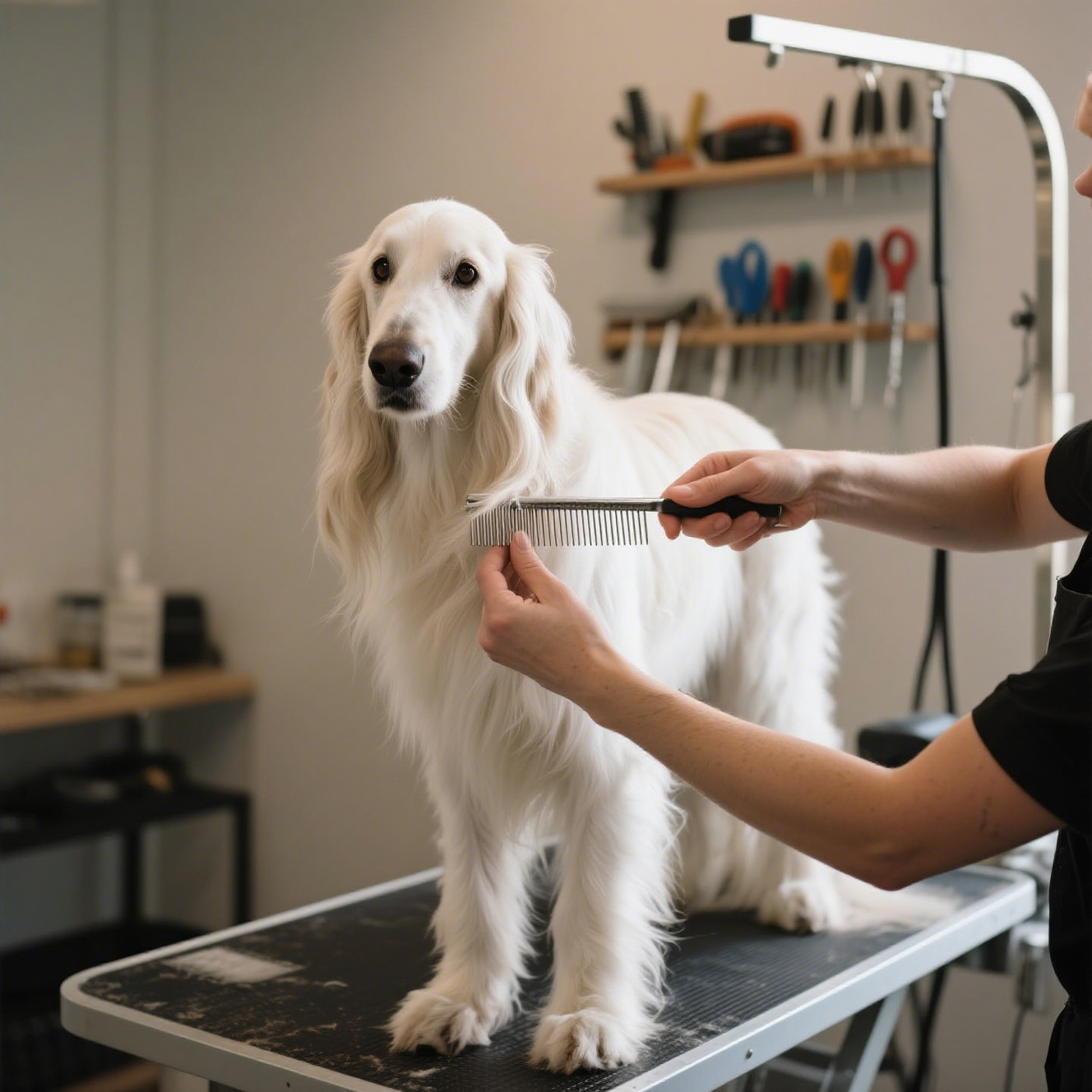
The type of brush you choose will depend largely on your dog's coat. Here’s a quick guide:
Slicker Brushes: Ideal for removing mats and tangles from most coat types, especially medium to long hair. Their fine, wire bristles are excellent for breaking up mats and smoothing the coat.
Pin Brushes: Great for dogs with longer, silkier coats, helping to detangle and smooth without pulling. They are also suitable for breeds with dense or woolly coats to work through the fur gently.
Bristle Brushes: Best for short-haired breeds to remove loose hair and add shine. These brushes mimic the natural oils of the skin, distributing them evenly throughout the coat for a healthy sheen.
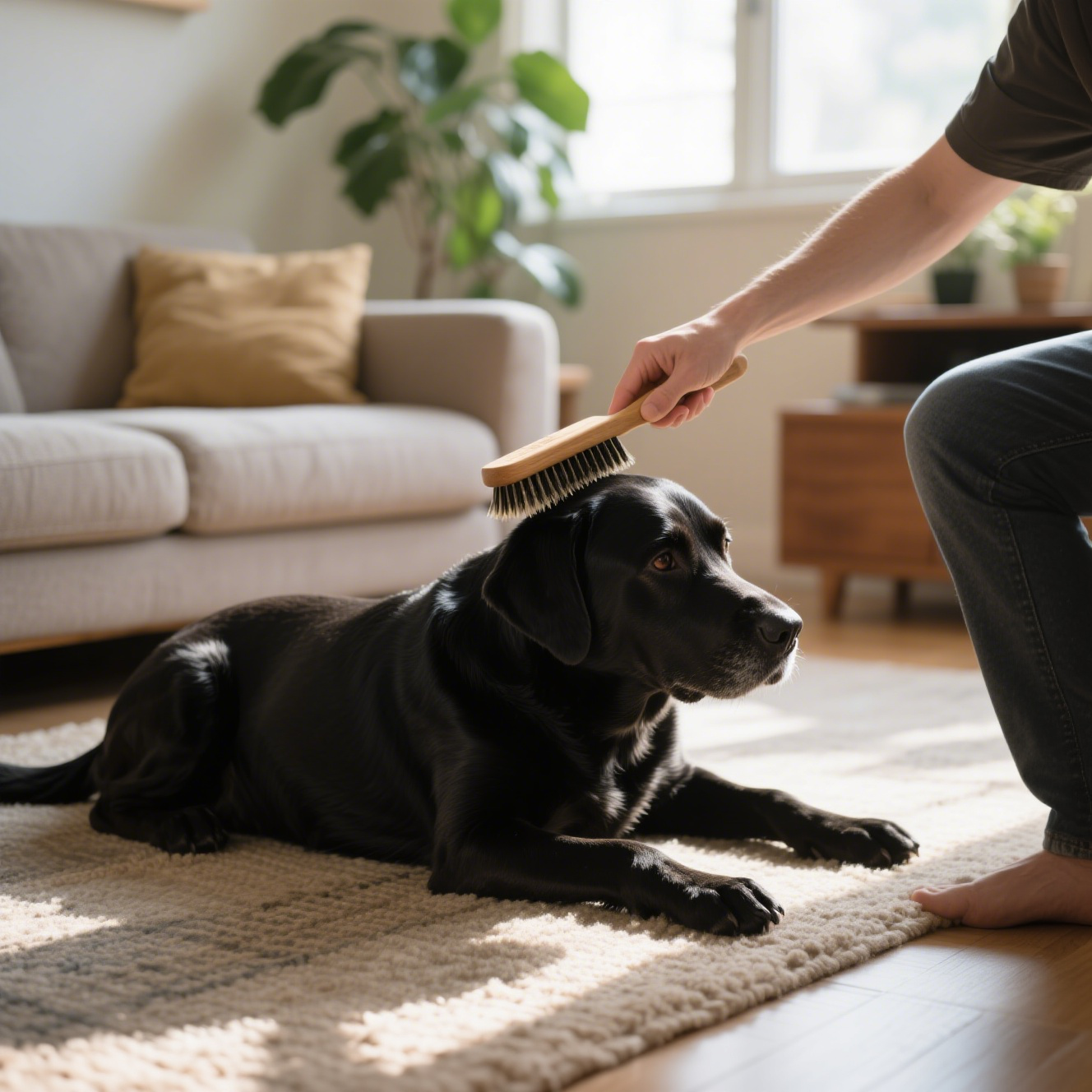
Undercoat Rakes: Essential for double-coated breeds to remove loose undercoat and prevent matting. These tools are designed to penetrate the dense outer coat and effectively remove shedding undercoat without damaging the topcoat.
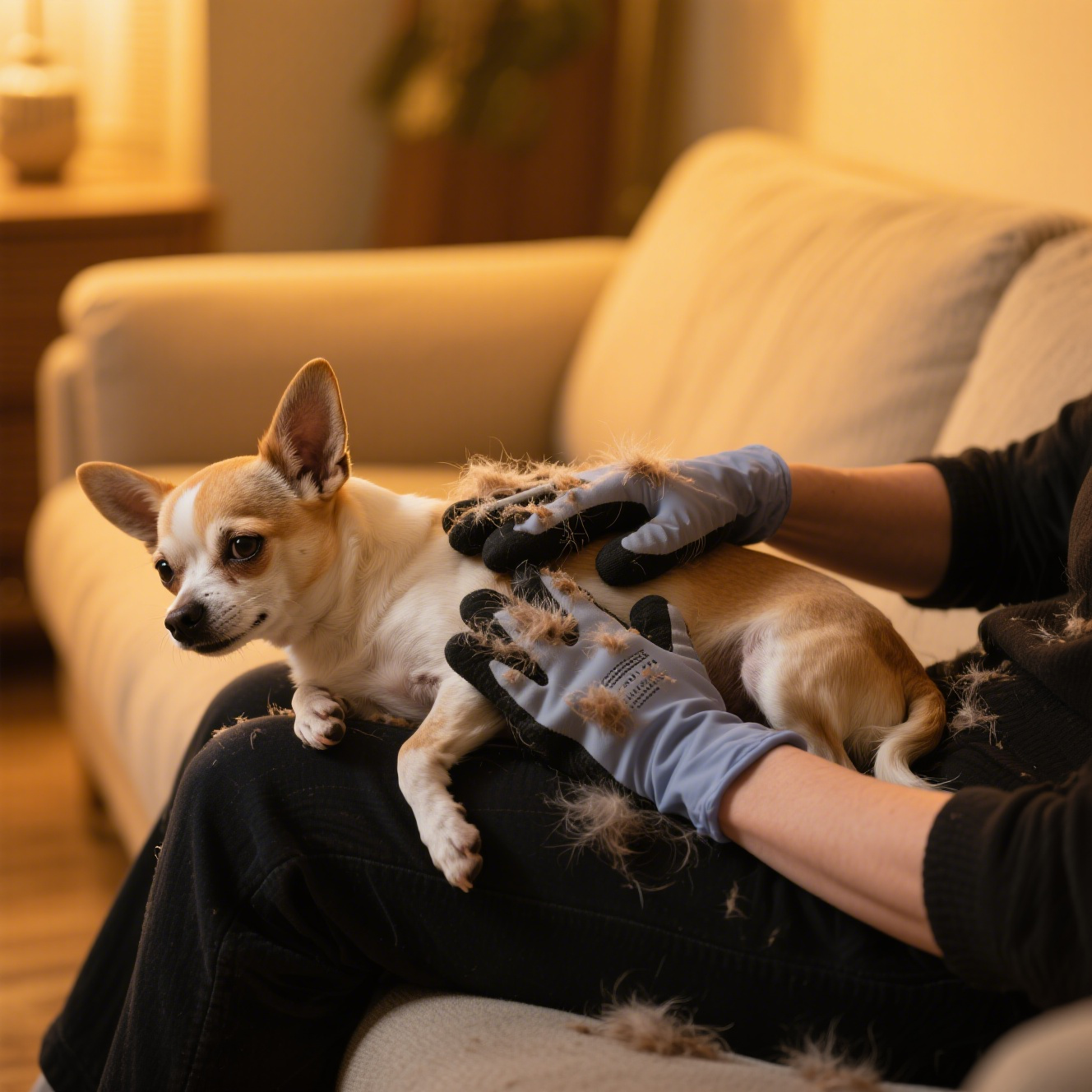
Grooming Gloves: Excellent for all coat types, particularly for short-haired dogs, for a gentle massage and to collect loose fur. They are also great for stimulating circulation and can make grooming feel more like a petting session.
Clippers and Scissors
For trimming hair and managing longer coats, clippers and scissors are indispensable. Opt for quiet, high-quality clippers to avoid startling your dog. Look for models with different blade sizes to accommodate various grooming needs. Blunt-nosed scissors are safer for trimming around sensitive areas like the face and paws, reducing the risk of accidental nicks. Regular maintenance of these tools, such as oiling clipper blades, will extend their lifespan and ensure efficient performance.
Nail Trimmers
There are two main types: scissor-style and guillotine-style. Choose the one you find most comfortable and effective. Always have styptic powder on hand in case you accidentally cut too close to the quick, which is a blood vessel and nerve that runs through the nail. Introducing nail trimming early in a dog's life can help them become more accustomed to the process. If your dog is particularly resistant, consider using a nail grinder, which files the nail down gradually and can be less intimidating for some dogs.
Shampoo and Conditioner
Always use dog-specific shampoos and conditioners. Human products can irritate a dog's skin due to differences in pH levels. Consider specialized shampoos for sensitive skin, shedding, or specific coat conditions, such as those formulated for dry skin, excessive oiliness, or to enhance coat color. Read labels carefully to ensure products are free from harsh chemicals, parabens, and sulfates that could be detrimental to your dog's skin health.
Other Essentials
Ear Cleaner: A veterinarian-approved solution for regular ear cleaning. Choose a non-irritating formula to prevent discomfort.
Dental Care Kit: Dog toothbrush and toothpaste for maintaining oral hygiene. Start dental care early to make it a routine part of your dog's life.
Towels: Plenty of absorbent towels for bath time. Microfiber towels are particularly effective at wicking away moisture.
High-Velocity Dryer (Optional): Can significantly speed up drying time for longer-coated breeds. These dryers use powerful airflow rather than heat, making them safer and more efficient for drying dense coats.
Grooming Table with Arm (Optional): Provides a stable and elevated surface, making grooming easier and safer for both you and your dog, especially for larger breeds or those requiring extensive grooming.
A Step-by-Step Guide to Effective Dog Grooming
Establishing a routine is key to successful dog grooming. Start slowly, especially with puppies, and make it a positive experience with treats and praise. Consistency and patience are your best allies in making grooming a comfortable and even enjoyable activity for your dog. Begin with short sessions and gradually increase the duration as your dog acclimates.
1. Brushing: The Foundation of a Healthy Coat
Before any bath, thoroughly brush your dog to remove loose hair and tangles. This prevents mats from tightening when wet. For long-haired breeds, consider line brushing or sectioning the coat to ensure you reach all layers, working from the skin outwards. Regular brushing not only prevents matting but also distributes natural oils, making the coat shiny and healthy, and helps to reduce shedding in your home. It's also a great opportunity to check for fleas, ticks, or any skin abnormalities.
2. Bathing: Keeping Them Clean and Fresh
The frequency of bathing depends on your dog's breed, activity level, and coat type. Generally, bathe your dog every 4-6 weeks, or when they are visibly dirty. Use lukewarm water and apply dog-specific shampoo, working it into a lather, ensuring you reach the skin. Rinse thoroughly to prevent skin irritation from residue, as leftover shampoo can lead to dryness and itching. Follow with a conditioner if recommended for your dog's coat type, which can help with detangling and add moisture. Make sure to protect their eyes and ears from water during the bath.
3. Drying: Preventing Skin Issues and Odors
After bathing, gently squeeze excess water from the coat. Use absorbent towels to pat your dog dry. For long-haired breeds, a blow dryer on a cool or low-heat setting can be used, but always keep it moving to prevent hot spots. Ensure your dog is completely dry to prevent fungal infections and mildew odors, especially in breeds with thick undercoats. Damp fur can be a breeding ground for bacteria and yeast, leading to unpleasant smells and skin irritations. Air drying alone is often insufficient for dense coats and in humid environments.
4. Nail Trimming: Essential for Comfort and Mobility
Trim your dog's nails every 2-4 weeks, or as needed. Be cautious not to cut into the quick, which is a blood vessel and nerve that runs through the nail. If you're unsure, ask your vet or a professional groomer for a demonstration. Regular trimming helps prevent painful overgrowth and discomfort, which can affect their posture and lead to joint problems over time. Overgrown nails can also snag and tear, causing significant pain. If your dog has dark nails, locating the quick can be challenging, so trim in small increments.
5. Ear Cleaning: Preventing Infections
Clean your dog's ears weekly or bi-weekly, especially if they have floppy ears, which are more prone to infections. Use a veterinarian-approved ear cleaner and a cotton ball or soft cloth. Never insert anything deep into the ear canal, as this can cause damage. Look for signs of redness, swelling, discharge, or a foul odor, which could indicate an ear infection requiring veterinary attention. Regular cleaning helps remove wax buildup and debris, preventing these issues.
6. Dental Care: Crucial for Overall Health
Aim to brush your dog's teeth daily, or at least several times a week, using dog-specific toothpaste and a toothbrush. Regular dental care prevents plaque and tartar buildup, which can lead to gum disease and other serious health issues, including heart and kidney problems. Beyond brushing, consider dental chews, water additives, and professional dental cleanings as recommended by your veterinarian to maintain optimal oral hygiene. Bad breath is often a sign of dental problems and should not be ignored.
7. Trimming and Styling (as needed)
For breeds with constantly growing hair, like Poodles or Shih Tzus, regular trims are necessary to maintain their coat and prevent matting around the eyes, paws, and sanitary areas. You can learn to do basic trims yourself with appropriate safety scissors and clippers, or opt for professional grooming services for more complex styles and maintenance. Regular trims also help keep your dog comfortable, especially in warmer climates, by removing excess fur.
Frequency of Grooming Tasks
Understanding how often to perform specific dog grooming tasks is crucial for maintaining your pet's health and appearance. Here’s a general guideline, but remember that individual needs may vary based on breed, activity level, and lifestyle:
| Grooming Task | Frequency |
| Brushing | Daily to a few times a week, depending on coat type (e.g., daily for long-haired breeds, 2-3 times/week for short-haired) |
| Bathing | Every 4-6 weeks, or as needed (e.g., after rolling in something dirty) |
| Nail Trimming | Every 2-4 weeks, or when you hear their nails clicking on the floor |
| Ear Cleaning | Weekly to bi-weekly, or more frequently for dogs prone to ear infections |
| Dental Brushing | Daily to several times a week for optimal oral health |
| Professional Grooming | Every 4-12 weeks, depending on breed, coat growth, and desired style |
Common Dog Grooming Challenges and Solutions
Even with the best intentions, grooming can present its challenges. Understanding common issues and their solutions can make the process smoother and more enjoyable for both you and your dog. Anticipating these hurdles and knowing how to overcome them will build your confidence and your dog's trust.
Matted Fur
Prevention is key. Regular brushing, especially for long-haired breeds, is crucial. If mats occur, try to gently work them out with a slicker brush or a de-matting tool, using a small amount of detangling spray. Always be patient and avoid pulling. For severe, tight mats close to the skin, it’s often best to seek professional help to avoid causing pain or injury to your dog. Attempting to cut out large mats yourself can lead to accidental cuts to the skin, which can be difficult to see underneath the matted fur. Professional groomers have specialized tools and techniques for safe mat removal.
Fear of Grooming Tools
Introduce tools slowly and positively. Let your dog sniff and explore the brush or clippers, associating them with positive experiences like treats and praise. Start with short, gentle sessions, perhaps just a few strokes of the brush or touching the clippers to their body while turned off, and gradually increase the duration as your dog becomes more comfortable. If a particular tool causes significant anxiety, consider desensitization training, where you expose your dog to the tool from a distance, gradually moving it closer as they remain calm. Positive reinforcement is vital here; never force your dog to endure a grooming session if they are showing extreme distress.
Sensitive Skin or Allergies
If your dog has sensitive skin, choose hypoallergenic, veterinarian-recommended shampoos and conditioners that are free from harsh chemicals, fragrances, and dyes. Consult your vet to rule out underlying allergies (food or environmental) and get advice on appropriate grooming products and routines. Your vet might suggest medicated shampoos or supplements to support skin health. Pay close attention to your dog's reaction to new products and switch immediately if irritation occurs. Regular bathing with a gentle shampoo can actually help remove allergens from their coat.
Excessive Shedding
All dogs shed to some extent, but excessive shedding can be a concern. Regular brushing with an undercoat rake or de-shedding tool (like a Furminator) can significantly reduce the amount of loose hair in your home. Consider specialized de-shedding shampoos and conditioners during peak shedding seasons. If shedding seems abnormal or is accompanied by bald patches, dull coat, or skin irritation, consult your veterinarian to rule out nutritional deficiencies, parasites, or underlying health conditions. A balanced diet also plays a crucial role in managing shedding.
Professional Grooming vs. At-Home Grooming
Deciding between professional grooming and at-home dog grooming depends on several factors, including your dog's breed, coat type, temperament, and your comfort level and time availability. Many owners find a combination of both approaches to be most effective.
Benefits of Professional Grooming
Expertise: Professional groomers have specialized knowledge and tools for all coat types and temperaments. They understand breed-specific cuts and can execute complex grooming tasks.
Safety: They are trained to handle various dog behaviors, including anxious or aggressive dogs, and use tools safely, minimizing the risk of injury. Their experience allows them to work efficiently and safely.
Complex Tasks: Professionals can handle intricate cuts, de-matting severe tangles that might be too painful or difficult for an owner, and specialized treatments like medicated baths or anal gland expression.
Time-Saving: It frees up your time and ensures your dog gets thorough, high-quality care without you having to invest in expensive equipment or extensive training.
Early Detection: Groomers often spot skin issues, lumps, ear infections, dental problems, or other health concerns that owners might miss during regular at-home checks due to their trained eye and systematic approach.
Benefits of At-Home Grooming
Cost-Effective: Doing some or all of your dog's grooming yourself saves money on regular professional grooming appointments.
Bonding: Provides a unique opportunity to bond with your dog in a familiar environment, building trust and reinforcing your relationship.
Convenience: You can groom your dog on your own schedule, fitting it into your daily routine as needed, rather than adhering to appointment times.
Control: You have complete control over the products used, the grooming process, and the level of comfort your dog experiences, tailoring it precisely to their needs.
Observation: Regular at-home grooming allows you to keep a closer eye on your dog's skin, coat, and overall physical condition, facilitating early detection of changes.
For many pet owners, a hybrid approach works best: regular at-home maintenance coupled with periodic professional grooming for more complex tasks, seasonal upkeep, or when you simply need a break. This ensures comprehensive care while also fostering your bond with your pet.
Beyond the Basics: Nutrition and Coat Health
While external care is vital, a healthy coat also begins from within. A balanced diet rich in essential nutrients plays a significant role in your dog's skin and coat health. What your dog eats directly impacts the quality, shine, and strength of their fur. Just as a good diet is crucial for human health, it's indispensable for your dog's overall vitality, including their largest organ: their skin and coat.
Omega-3 and Omega-6 Fatty Acids
These essential fatty acids, found in ingredients like fish oil, flaxseed, and certain animal fats, are crucial for maintaining healthy skin and a shiny coat. They help reduce inflammation, promote cell health, and support the skin's barrier function, which protects against environmental irritants and retains moisture. Deficiencies can lead to dry, flaky skin, dull fur, and increased susceptibility to skin infections. Supplementing with omega fatty acids, under veterinary guidance, can often dramatically improve coat condition.
Protein
Hair is primarily composed of protein (keratin). Ensuring your dog receives adequate, high-quality protein in their diet is fundamental for strong, healthy hair growth. Look for dog foods with named meat sources (e.g., chicken, beef, lamb) as the first ingredients, indicating a higher protein content. Low-quality protein can lead to brittle, sparse, or slow-growing fur, as well as dullness and a lack of luster. Sufficient protein supports not only the coat but also muscle mass and overall bodily functions.
Vitamins and Minerals
Vitamins A, E, and B complex, along with minerals like zinc and copper, are all important for skin and coat health. Vitamin A promotes cell growth and repair, Vitamin E is an antioxidant that supports skin health, and B vitamins play a role in hair growth and follicle health. Zinc is vital for healthy skin and wound healing, while copper contributes to coat pigmentation and elasticity. A complete and balanced dog food should provide these nutrients in appropriate amounts. If you're feeding a homemade diet, ensuring these micronutrients are balanced is even more critical, and a veterinary nutritionist can help formulate a suitable plan.
If you notice persistent dullness, excessive shedding, dry patches, or skin issues despite regular grooming, consult your veterinarian. These symptoms could indicate nutritional deficiencies, allergies, or other underlying health conditions that require professional diagnosis and treatment. Your vet can recommend dietary adjustments or supplements tailored to your dog's specific needs, helping to restore their coat's vitality from the inside out.
Embrace Smart Pet Care with PettureX
In today's fast-paced world, leveraging technology can significantly enhance your pet care routine. We recommend the PettureX app, an innovative smart assistant for every pet owner. PettureX offers groundbreaking features designed to simplify and optimize pet care:
Image Recognition for Animal Species Identification: Ever wondered about a specific breed or an animal you encountered? PettureX can identify animal species from a simple photo, providing instant information and fascinating facts.
Image Recognition for Pet Health: A revolutionary feature that allows you to take a picture of a skin anomaly, a change in coat texture, a visible wound, or any other physical concern on your pet. PettureX’s advanced AI analyzes the image to provide preliminary insights into potential health issues, helping you decide if a vet visit is necessary. This can save valuable time and alleviate initial worries.
24-Hour AI Consultation: Got a question about your pet’s behavior, diet, a sudden change you’ve noticed, or just need general advice? PettureX offers instant, 24/7 AI-powered consultations, providing quick and reliable advice to pet owners based on a vast database of veterinary knowledge. This intelligent assistant helps you understand your pet's health status rapidly, offering peace of mind around the clock and guiding you toward appropriate action.
PettureX is more than just an app; it's your smart partner in ensuring your pet's lifelong health and happiness, making informed decisions easier than ever and empowering you with knowledge at your fingertips.
Final Thoughts on Dog Grooming
Regular and attentive dog grooming is a fundamental aspect of responsible pet ownership. It’s a holistic approach that combines external care, internal nutrition, and diligent observation. By committing to a consistent grooming routine, you not only ensure your dog looks magnificent but also contribute significantly to their overall health, comfort, and longevity. Grooming provides an invaluable opportunity to bond with your pet, strengthening your relationship while keeping them healthy from nose to tail.
Remember that each dog is unique, and their grooming needs will vary based on their breed, coat type, age, and health. Don't hesitate to consult with your veterinarian or a professional groomer if you have specific concerns or need personalized advice on how to best care for your furry friend's coat. They can offer tailored recommendations and demonstrate proper techniques. A well-groomed dog is a happy, healthy dog, and the effort you put in will be richly rewarded with their companionship, vibrant well-being, and a noticeably healthier coat that reflects their inner vitality.
Related
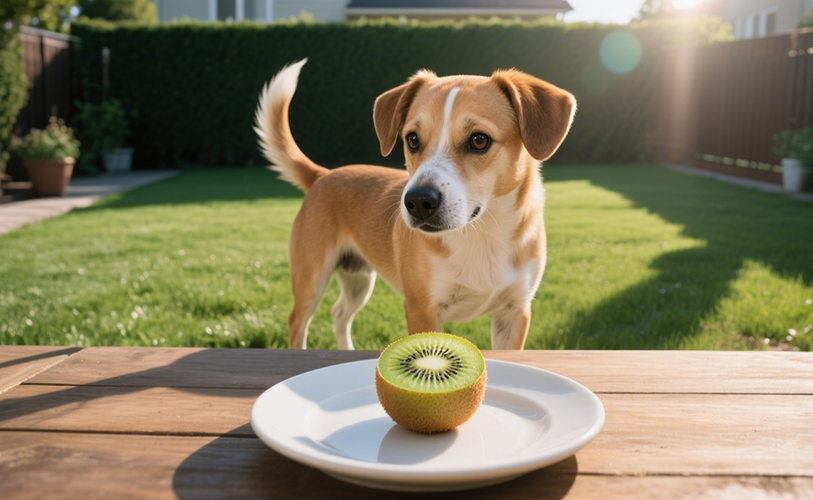
Can Dogs Eat Kiwis? A Vet-Approved Guide to This Fuzzy Fruit
- 10 Jun 2025
Can Dogs Eat Curry? Unpacking Risks, Benefits, and Safe Alternatives for Your Canine Companion
- 3 Jun 2025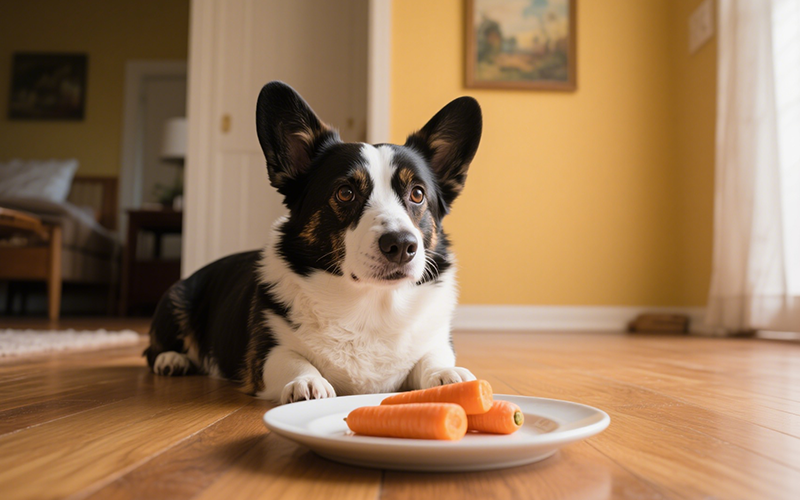
Can Dogs Eat Cooked Carrots? A Crunchy & Colorful Canine Query!
- 29 May 2025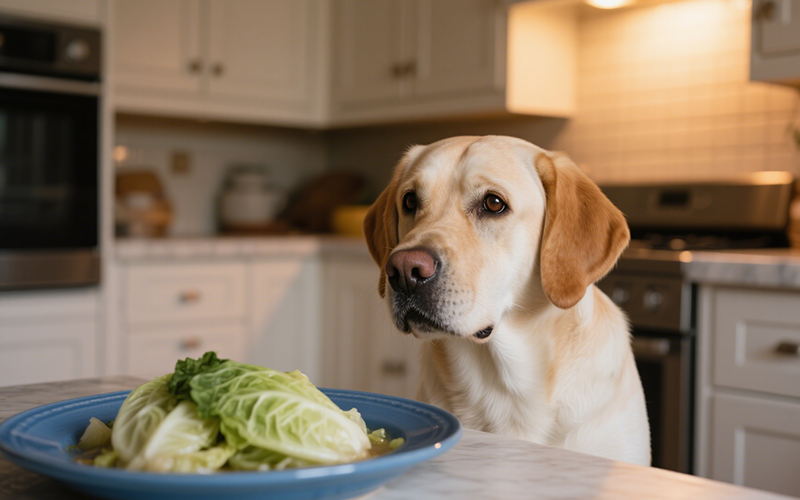
Can Dogs Eat Cooked Cabbage? Unveiling the Crunchy Truth for Your Canine!
- 29 May 2025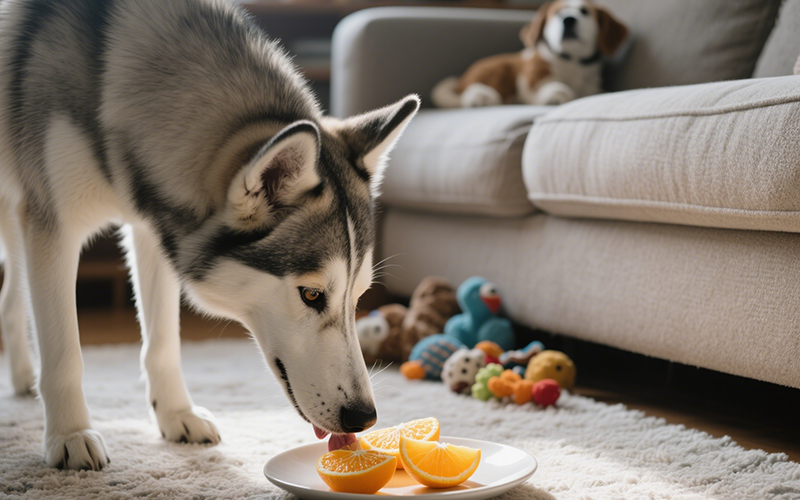
Can Dogs Eat Citrus? Peeling Back the Zesty Truth for Your Pup!
- 28 May 2025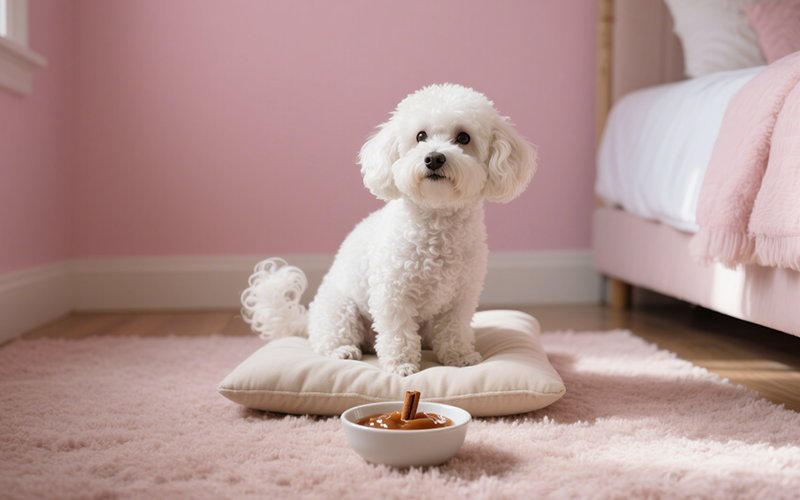
Can Dogs Eat Cinnamon Applesauce (A Little Bit)? The Sweet and Spicy Truth!
- 28 May 2025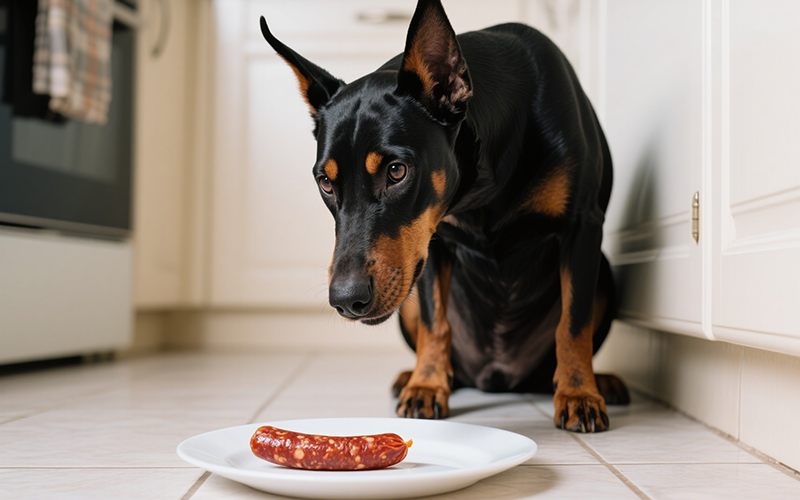
Can Dogs Eat Chorizo? Sizzling a Warning for Your Furry Friend!
- 27 May 2025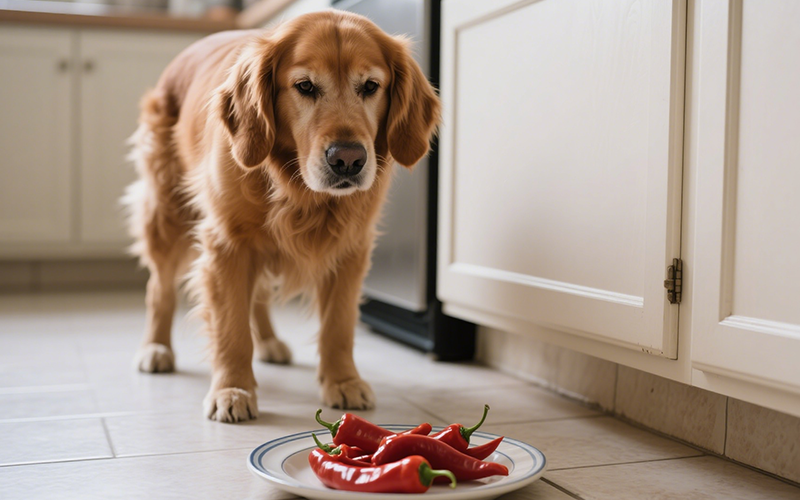
Can Dogs Eat Chili? A Spicy Topic for Canine Consumption!
- 27 May 2025
Can Dogs Eat Raw Chicken? Unveiling the Risks and Realities
- 26 May 2025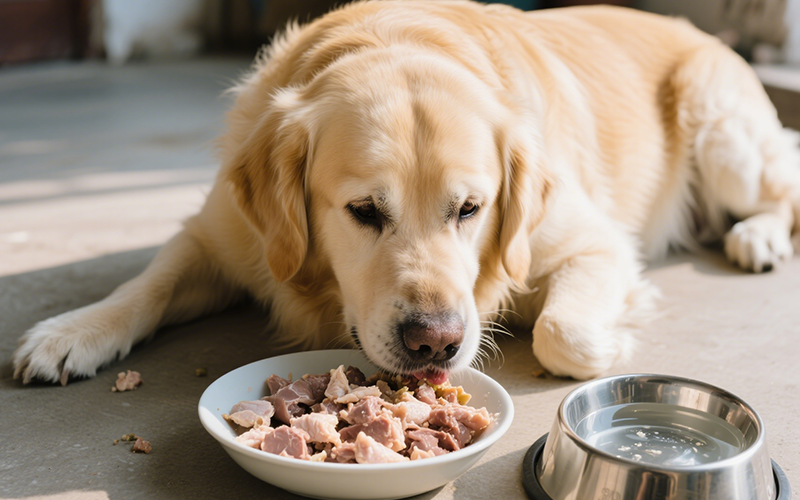
Can Dogs Eat Chicken Gizzards? A Gut Feeling About This Meaty Morsel!
- 26 May 2025
